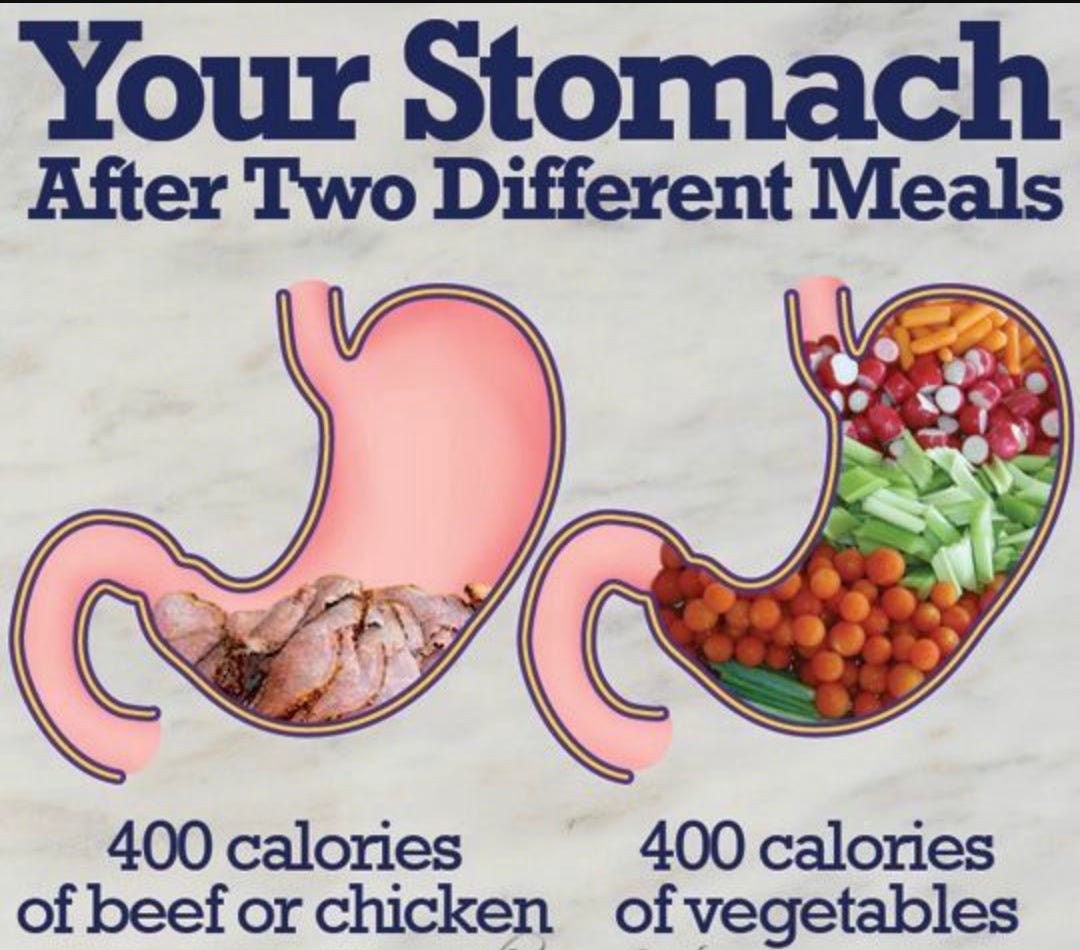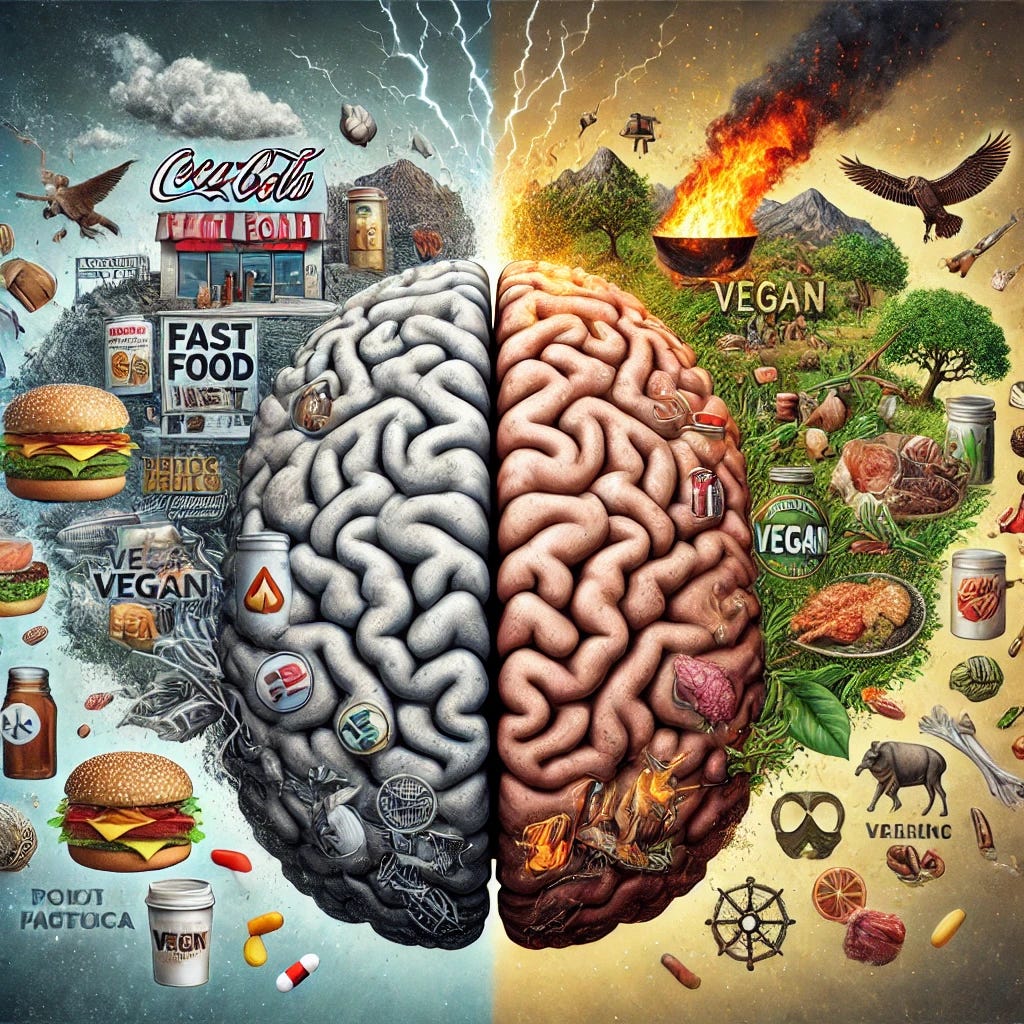Cognitive Dissonance
The Second C of Carnivorism
Curiosity sparks the initial effort to look into a carnivore diet. But as soon as one does, they hit a brick wall, with most of society telling you you’re crazy for wanting to eat more meat.
Mr. Skeptical looks up excited. “Yeah, well, society isn’t always wrong, is it?”
“I’d argue that more often than not it is.”
Subconscious Fat at 30,000 Feet
Mr. Skeptical folds his arms. “So what’s the second magical C? Cravings?”
I shake my head. “Cognitive Dissonance.”
He groans. “Oh no, now we’re getting psychological.”
“It’s the clash,” I explain. “The war inside your brain when society says meat is evil, but your body’s saying, ‘Give me the steak.’”
“Maybe society has a point,” he says. “Meat causes cancer, climate change, and cholesterol spikes. Haven’t you heard?”
I smirk. “I’ve heard. And I’ve also heard about Weston A. Price, Stefánsson, and our hunter-gatherer ancestors. The dissonance is real—but it’s not because meat is wrong. It’s because we’ve been brainwashed.”
Subconscious Fat at 10,000 Feet
Mr. Skeptical raises a brow. “So everyone’s brainwashed now?”
“Think about the repeated cycles ancient human societies have undergone again and again.”
“What cycles are you talking about?”
I ponder momentarily and toss out a mental lure for Mr. Skeptical. “Humans, before we got into farming, would eventually kill all the surrounding animals.”
“Yeah, so we started farming so as not to starve to death.”
He bit the mental lure. “Exactly, we needed the vegetables and grains not to starve, meaning it was secondary food. It was leftovers. It was plan B food. We had to cross-breed and hybridize vegetables so that we would eat them because nobody wanted them in their natural state.”
Mr. Skeptical gets up from his chair. “Uggh, you’re going to mention corn again?”
“Not just corn, but virtually all fruits and vegetables have been bred, hybridized, and manipulated to satisfy human taste. So that we eat it instead of too much meat.”
“Well, we had too.”
“And that’s my point.”
Subconscious Fat at Eye-Level
I lean back, putting my hands behind my head. “How many fathers and mothers from way, way back told their children to eat their vegetables?”
“Parents did that so that children would get lots of vitamins and minerals.”

I look at Mr. Skeptical as if he’s insane, which, after looking at the above chart, is debatable. “Parents first told their children to eat vegetables because there may not have been enough meat. The veggies and wheat products were more for filling the stomach up, so there was enough meat to go around. Eventually, people started believing vegetables were essential, but they never really were.”
I add, “Cognitive dissonance isn’t a bug. It’s a feature. It’s what happens when instinct collides with indoctrination.”
“You sound like a conspiracy theorist.”
“Nope,” I reply. “Just someone who’s looked at the data, the anthropology, the history. We thrived on meat. Only recently did we start fearing it.”
He sips his sugared coffee. “So you think we should just ignore all modern science?”
“I think we should question the incentives behind it. Who profits when you stop eating meat? Who funds the studies? Who gets rich off your guilt?”
Mr. Skeptical leans in, intrigued. “But even if you’re right, you’re fighting a whole culture. Ads, schools, doctors—they’re all on the other team.”
“Exactly,” I say. “That’s why dissonance is the second C. It’s what tests your resolve. Will you go along with the herd, or break out and reclaim your instincts and what makes common sense to you?”
He nods slowly. “So you’re saying the discomfort is part of the path?”
“Yeah. If you’re not feeling dissonance, you’re probably not waking up.”
“To steak-fueled clarity?” he says, raising a skeptical brow.
“To question everything,” I reply, raising my buttered coffee and spreading my arms. “Especially what you’ve been taught to fear.”

Practical Suggestions and Conclusions
“The above chart explains why most men (especially men over 40) don’t get enough protein. Then they complain when they have less muscle and a bigger belly.”
Mr. Skeptical remains quiet with a smirk on his face.
Feel the Discomfort — Don’t run from it. Cognitive dissonance is your brain’s flagging that something doesn’t add up. Lean into that tension.
Trace the Beliefs — Ask where your anti-meat ideas came from. Who told you? Why? Were they healthy, happy, or just repeating dogma?
Eat Like a Human—Test your instincts. Try a week of animal-based eating and see how you feel physically, mentally, and emotionally.
Doubt the Narrative — If everyone’s saying the same thing, especially with moral urgency, it’s probably time to investigate.
Build a New Framework — Read history. Look at indigenous diets. Stop thinking of meat as a villain and start seeing it as an ally.
Cognitive Dissonance isn’t the end. It’s the red pill. Swallow it, and welcome to the real meal.
Be aware.
Other links related to this post:
Can Too Much Meat be Bad for You?
Wild New World
Redefining Normal
PS Links on LinkedIn, Facebook, and Instagram. Full disclosure: Chat GPT was used to research and enhance this post.


